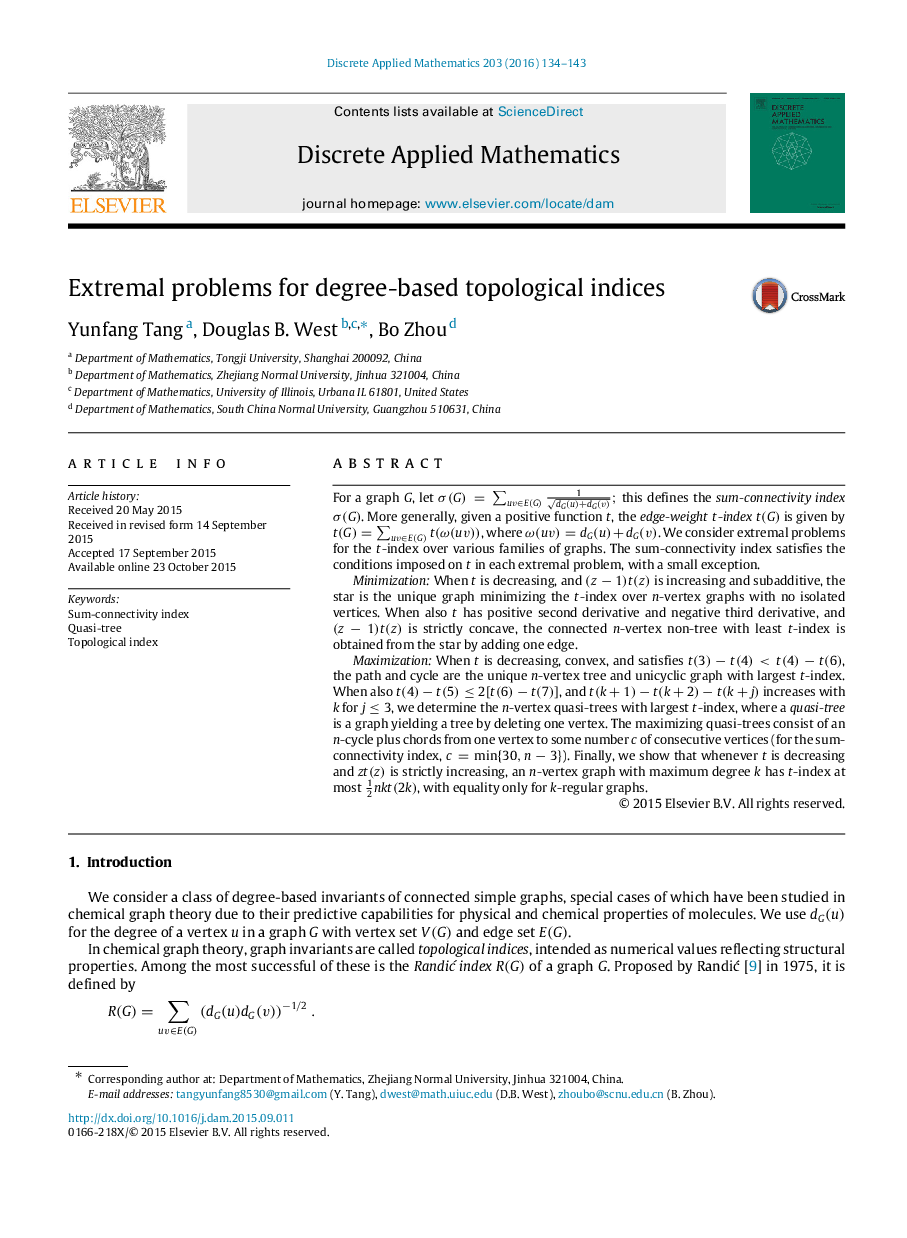| Article ID | Journal | Published Year | Pages | File Type |
|---|---|---|---|---|
| 417887 | Discrete Applied Mathematics | 2016 | 10 Pages |
For a graph GG, let σ(G)=∑uv∈E(G)1dG(u)+dG(v); this defines the sum-connectivity index σ(G)σ(G). More generally, given a positive function tt, the edge-weight tt-index t(G)t(G) is given by t(G)=∑uv∈E(G)t(ω(uv))t(G)=∑uv∈E(G)t(ω(uv)), where ω(uv)=dG(u)+dG(v)ω(uv)=dG(u)+dG(v). We consider extremal problems for the tt-index over various families of graphs. The sum-connectivity index satisfies the conditions imposed on tt in each extremal problem, with a small exception.Minimization: When tt is decreasing, and (z−1)t(z)(z−1)t(z) is increasing and subadditive, the star is the unique graph minimizing the tt-index over nn-vertex graphs with no isolated vertices. When also tt has positive second derivative and negative third derivative, and (z−1)t(z)(z−1)t(z) is strictly concave, the connected nn-vertex non-tree with least tt-index is obtained from the star by adding one edge.Maximization: When tt is decreasing, convex, and satisfies t(3)−t(4)
